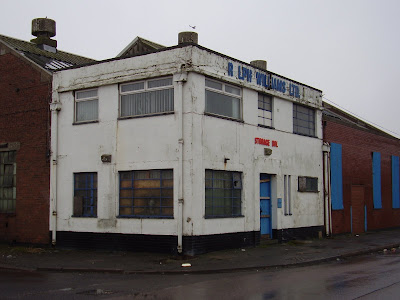 The extent of the liability of charity trustees to have to pay their own money to meet the debts or obligations of the charity is scandalous. I know local individuals who’ve had to stump up thousands when a small charity ceased (the theory was that they should have been aware that the Manager wasn’t doing what she said she had been doing with the money). The current Governance magazine speaks of newly appointed trustees bankrupted (because they didn’t pick up at the first meeting they attended that the way an employee was being made redundant left them open to his suing them). Paid employees of companies are not left open in this way.
The extent of the liability of charity trustees to have to pay their own money to meet the debts or obligations of the charity is scandalous. I know local individuals who’ve had to stump up thousands when a small charity ceased (the theory was that they should have been aware that the Manager wasn’t doing what she said she had been doing with the money). The current Governance magazine speaks of newly appointed trustees bankrupted (because they didn’t pick up at the first meeting they attended that the way an employee was being made redundant left them open to his suing them). Paid employees of companies are not left open in this way.Guidance to trustees says we should keep this in perspective and that incidents are very rare. I continue to drive on motorways even though I know there is a remote chance that someone else’s bad driving will kill me. I continue to act as a trustee of several organisations even though I know that there is a remote chance that someone else’s actions will come back to haunt me.
But not everyone is so relaxed about this. Yesterday I heard the person who promotes and supports trusteeship at our local Voluntary Action organisation say that he wouldn’t act as a trustee of an unincorporated charity. Two days earlier I heard those involved in Freshney Forward (the Fresney Ward covers half this parish; locally ‘Forward’ groups are forums for Councillors, residents, statutory groups and voluntary groups) resist the idea that a specific activity should be opened up to grant possibilities by becoming a charity of which they would be trustees, and it was about this issue that people were nervous.
So at the Voluntary Action training event I attended yesterday, I was most interested in the way that the Charities Act 2006 will soon allow even very small charities to become Charitable Incorporated Organisations. This should give then limited liability but without having to register as a Company and thus have to meet all the disproportionate requirements of doing so (including filing all their returns twice - once with Companies House and once with the Charity Commissioners) and being subject to two quite different systems of scrutiny.
The only problem is that the provisions haven’t been brought into force yet. It needs to be soon, before the lives of too many other volunteers are ruined and the reluctance to consider being a trustee gets even more wide spread.
The event took place almost opposite the Town Hall and I’d never noticed the Bishop up on the front before. I’ve no idea who he is, but I rather like the way the bands on the back of his mitre fly about.



















